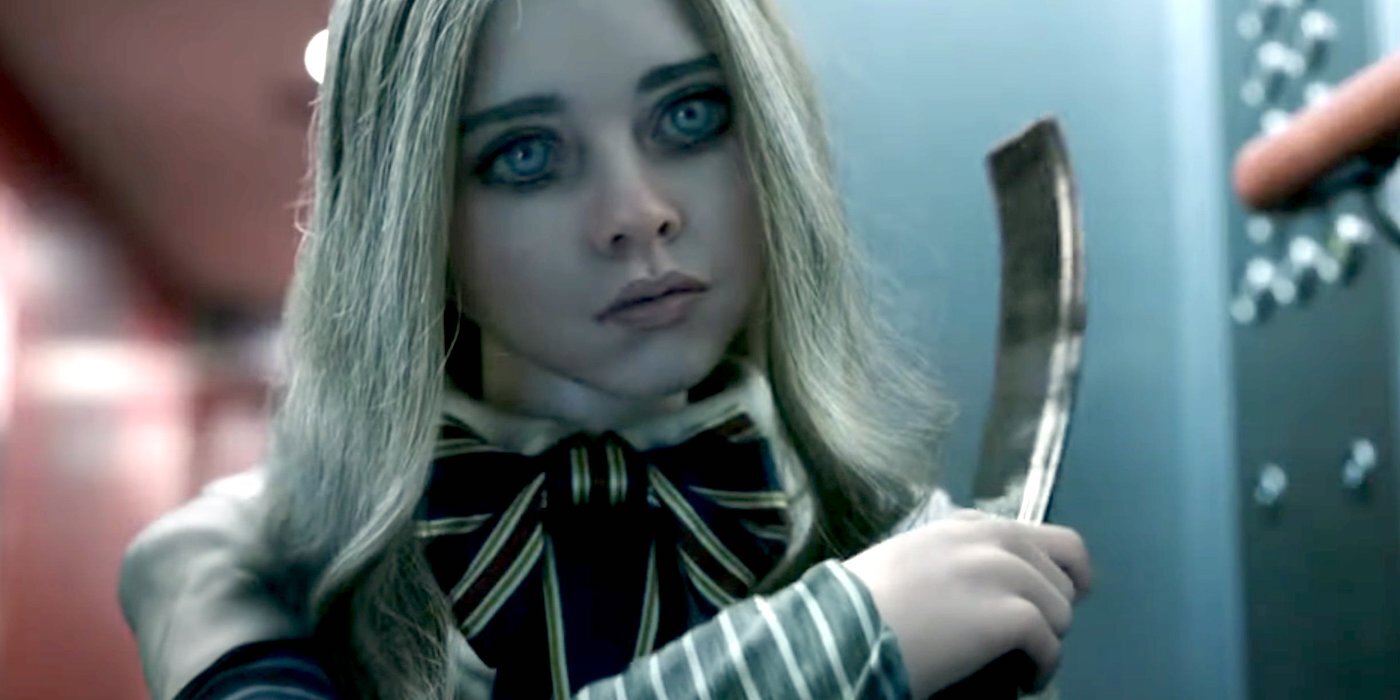Rating: 3 out of 5
“M3GAN,” a Blumhouse-produced horror film based on a life-like doll operated by Artificial Intelligence (AI), was released on Jan. 6. Blumhouse Productions is illustrious for their notable horror movies, which automatically intrigued audiences by the release of a new film produced by this huge company. However, “M3GAN” is more of a suspenseful sci-fi film as there are hardly any scare factors that a typical horror movie should have.
The film follows Cady (Violet McGraw), a young girl, who has just lost her parents to a tragic car accident and goes into her aunt’s custody. Roboticist Aunt Gemma (Allison Williams) is clueless when it comes to nurturing a child and thus resorts to what she knows best. Gemma finalizes her latest AI project, M3GAN (Amie Donald and Jenna Davis), to pair with Cady and accompany her in her time of loss and grief. Director Gerald Johnstone does a beautiful job of exploring children’s trauma responses and attachment theory after experiencing a traumatic event. After Cady grows unhealthily dependent on M3GAN, she treats the doll like a human and reacts violently when away from her. M3GAN is programmed to learn and adapt to surroundings, meaning those who pose a threat to Cady are seen as targets to eliminate. This movie has a classic killer-robot plot, playing on society’s fears that as AI progresses, robots may one day turn against humanity.
It was no surprise that social media users were eager to see what this film had to offer, given the public buildup for “M3GAN.” Unfortunately, it did not live up to expectations. The music for the vast majority of the movie is unsuitable for its scenes and makes scenes less horror-inducing than they could have been. The scene depicting the M3GAN doll singing “Titanium” by David Guetta as a lullaby to Cady was a missed opportunity for Johnstone to create a creepily eerie atmosphere. Her singing tone sounds melodic and professional, which gives the opposite effect of a killer doll. Not only does she sound like a child singer in “The Voice” in this scene, but this part of the film is rather out of place, considering how M3GAN had just been murdered in the forest.
However, this movie certainly did not disappoint in terms of visuals. The human-like and unsettling design of M3GAN evokes uncomfortable feelings within the audience, which can be explained by how people can recognize when a robot or an animated character resembles a human but does not look quite human at the same time. This phenomenon is known as the uncanny valley effect, which explains this eerie and uncomfortable feeling that may arise when audiences watch “M3GAN.” Johnstone incorporates this phenomenon into the design of the robot to make it truly emanate frightfulness. Various scenes where she lurks in the corner or sinisterly stares into another human’s eyes creep even the audience out. The cinematography and Computer-Generated Imagery (CGI) are outstandingly realistic and smooth, making the movie visually appealing.
Moreover, McGraw executes her character excellently for a child actor and demonstrates realistic emotional responses to trauma and distress. It is easy to feel sympathy as an audience during scenes where Cady acts out and opens up about her emotional pain.
Despite the impressive visuals used in ‘M3GAN,’ the film overall was more intense and suspenseful than scary. Ideally, elements such as a suspenseful soundtrack or a greater feeling of paranoia in the audience would be more heavily incorporated into a horror movie.

